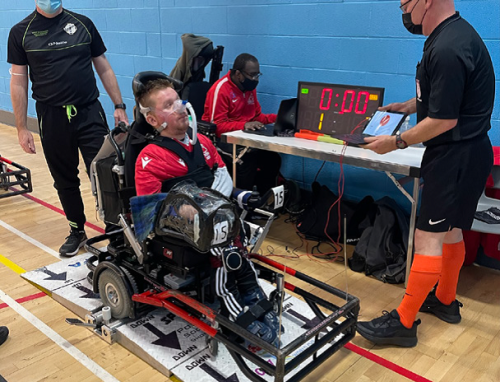The story of power wheelchair sports
There is no denying the power of sport. From the physical benefits it offers people, to the camaraderie of playing within a team, sport can be a great grounding for young people to develop skills and learn life lessons. Being part of a team can teach players social skills, the importance of communication, respect, resilience, accountability and leadership skills, all qualities that help children as they grow up and navigate the world.
Improved quality of life and affect are important outcomes (...) and have been consistently reported across multiple wheelchair sport settings."
(Barfield and Malone, 2013)
Benefits of power wheelchair sports
A lifestyle that includes regular exercise can improve quality of life and reduce the risk of secondary conditions associated with disability, such as obesity, depression and pain. But, according to research, there are also less obvious benefits. People who practice wheelchair sports, also enhance their executive processing skills needed for everyday function. It also improves their fitness and overall wheelchair mobility. But, perhaps most importantly, it has positive effects on personal relationships, social interactions, self-care skills and acceptance of disability.
Inclusive sporting opportunities are becoming far more readily available across the world, ensuring that children of all abilities can take part and reap the physical, mental and social benefits of sport.
Although there are many sports possible for people with physical disabilities, there are still limited options for users of power wheelchairs. Power wheelchair soccer/football was the first sport developed for people using power wheelchairs, rather than manual wheelchairs. Another sport that's popular for powerchairs is powerchair hockey.
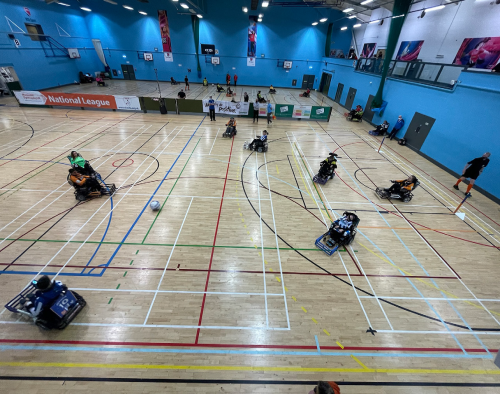
Powerchair soccer
Over recent years, power soccer (or power football) has grown greatly in popularity in some regions, such as the UK. In 2019, there were 107 affiliated powerchair football teams in England with over 1000 players training on a weekly basis. But thee are also more recreational opportunities for those who are new to the sport or just prefer a more relaxed game.
Players are classified to play in national or international competitions and there are two eligible classes: PF1 (higher-level impairment) and PF2 (lower-level of impairment). A team must have a minimum of two PF1s on court at any time and each game consists of two 20-minute halves, with four players from each side on court at any time (including the goalkeeper), but they can be replaced by a rolling substitute system.
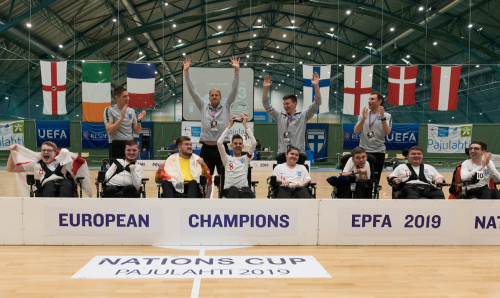
One of mo-vis' dealers is G5 Sports Services, owned by England international powerchair footballer, Chris Gordon: "Living with spinal muscular atrophy (SMA), I have been using a powerchair since secondary school. I first became involved in powerchair football about 13 years ago and in that time the sport has changed dramatically to the point where in 2019 England won the European Championships and I was honoured to be part of the winning team (pictured). In the early days, players used standard powerchairs with a large tyre attached to the front which they used to kick the ball (which was huge in those days) but over time this was replaced with a frame. The problem with everyone using different powerchair models was some people had much better chairs, so it was never a level playing field. However, this all changed with the launch of a purpose-built soccer powerchair by American manufacturer Power Soccer Shop for whom I now act as the UK distributor through my company G5 Sport Services".
I suggested he try a mo-vis control and the difference was unbelievable! He is no longer being held back by his equipment and both him and his parents have commented that the new controller has literally given him a new lease of life (Chris Gordon, G5 Sports Services)
Powerchair hockey
Another adapted sport with great appeal, is power hockey. It can be practiced by people with varying degrees of disability as there are two types of sticks in powerchair hockey. Players who have sufficient strength in their upper arms and torso play with a hand stick, the others with a so-called T-stick that is attached to the player's power chair. Wings allow a player to drive, intercept or even pass a ball. Playing this sport requires an agile, fast and powerful chair.
It is played by five players on each team (four field players and a goalkeeper) and a game consists of two halves each lasting twenty minutes. Because not all players have the same strength, they have to work together even more than in other team sports. Teams have to think strategically, in order to best play off their qualities against their opponents. It's the only powerchair sports, where players are allowed to drive at 18 km/h!
(Pictured is the 'Warrior' chair by Commandeur Revalidatietechniek, a Dutch mo-vis dealer with a sub-specialization in powerchair sports.)
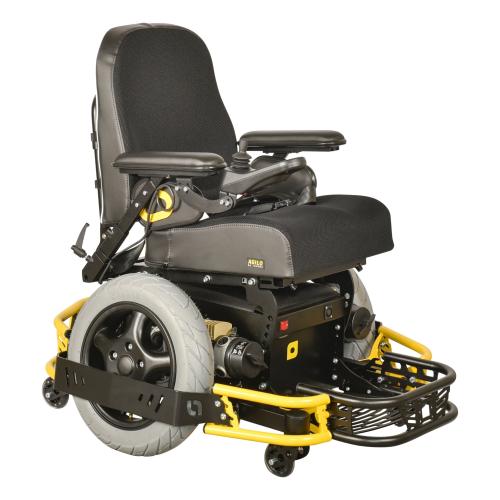
Game-changing equipment
Aside from the powerchair, one of the most vital pieces of equipment which every player uses is the system with which they control the powerchair. Most of the players have muscle wasting conditions and often find that as their condition deteriorates, they struggle with the standard controls.
Chris Gordon of G5 Sports Services, current England International power football player and mo-vis dealer, says that he was getting more and more requests to find a more suitable control system for some of the players. Initially, he couldn't find anything that would help players control their powerchair, until he saw the mo-vis controls and "that was a real game changer", according to him. "The Multi and Micro Joysticks are perfect as the resistance is so light even players with greatly reduced dexterity and strength in their hands can control their chair and fully take part in games".
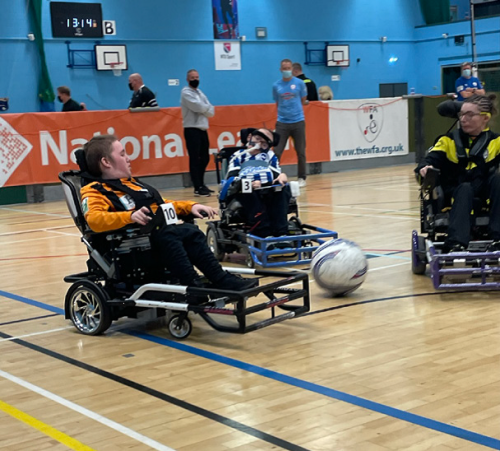
"The skill levels of some of the players with the most limited hand strength and dexterity should not be underestimated. I have tried on numerous occasions with little success and I would challenge anyone to watch a game and then have a go themselves! It is hard to explain just what a difference the mo-vis technology makes to some of the powerchair football players I work with. For example, in my role as a player and coach at West Brom, there is one player who could never fulfil his true potention when using a standard joystick and he could get extremely frustrated. I suggested he try a mo-vis control and the difference was unbelievable, he is no longer being held back by his equipment and both him and his parents have commented that the new controller has literally given him a new lease of life", says Chris.
Paralympic Games
Both powerchair football and hockey are still not accepted sports for the Paralympic Games. While we see that attention for parasports is growing, athletes who use powerchairs are still underrepresented. In the summer Paralympics, only boccia, archery and shooting feature athletes who use powerchairs while competing.
We hope that this will change in the future, as powerchair sports are some of the most inclusive sports, because athletes with different abilities, ages and gender compete together on one team. And the more opportunities there are on a higher level, the more people will join in at a recreational level.
